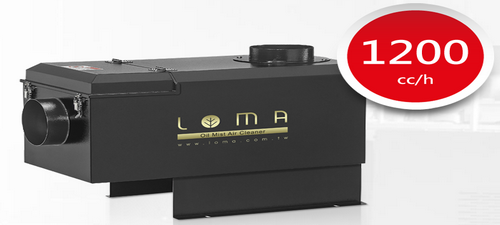Sustainable CNC machining increasingly relies on effective coolant management to reduce environmental impact, cut costs, and improve machining performance. Coolants are essential for lubrication, heat control, and chip removal, but improper handling leads to waste and higher expenses. Proper management practices—such as regular monitoring, filtration, recycling, automation, and using eco-friendly coolants—help extend coolant life, maintain machine health, and ensure consistent product quality. Although initial investment may be a barrier, the long-term benefits include cost savings, reduced waste, and enhanced operational efficiency. Future advancements in IoT and AI are expected to further optimize coolant systems, reinforcing sustainability in CNC machining.
Introduction
In the realm of CNC machining, sustainability has become a pivotal focus for manufacturers worldwide. As industries strive to reduce their environmental footprint, the management of coolant systems in CNC machining has emerged as a critical factor in achieving sustainable operations. Proper coolant management not only enhances the efficiency and longevity of machining processes but also significantly contributes to environmental conservation by minimizing waste and reducing operational costs. This report delves into the various aspects of coolant management that support sustainable CNC machining, drawing insights from recent studies and industry practices.
The Role of Coolant in CNC Machining
Coolants play a vital role in CNC machining by providing lubrication, reducing heat, and enhancing the quality of machined parts. They help in clearing chips, preventing tool wear, and maintaining the desired temperature during machining operations. However, improper management of coolants can lead to increased waste, higher operational costs, and environmental degradation. Therefore, adopting effective coolant management practices is essential for sustainable machining.
Benefits of Proper Coolant Management
1. Reduced Environmental Impact
Proper coolant management significantly reduces the environmental impact of CNC machining by minimizing waste and ensuring responsible disposal of used coolants. By implementing closed-loop systems, manufacturers can recycle coolants, thereby reducing the need for fresh coolant and cutting down on waste generation. This approach not only conserves resources but also aligns with the growing industry goal of reducing environmental footprints.
2. Cost Savings
Efficient coolant management leads to substantial cost savings by extending the life of coolants and reducing disposal costs. Filtration systems, for instance, remove contaminants from coolants, allowing them to be reused multiple times before disposal. Additionally, automation of coolant systems ensures precise control over coolant usage, further reducing waste and associated costs.
3. Enhanced Machine Performance
Clean and well-maintained coolants preserve the life and performance of CNC machines. Contaminants in coolants can cause unnecessary wear and tear on machine components, leading to reduced efficiency and increased maintenance costs. By keeping coolants clean, manufacturers can ensure smooth operations with minimal downtime and repairs.
4. Improved Product Quality
Consistent coolant management enhances product quality by maintaining optimal temperatures and lubrication during machining processes. This consistency ensures that every part meets strict industry standards, reducing the likelihood of defects and rework.

Referral Link
Best Practices for Coolant Management
1. Regular Monitoring and Maintenance
Routine monitoring of coolant systems is crucial for identifying potential issues early and ensuring optimal performance. Regular checks of coolant concentration, pH, and temperature help maintain the desired properties of the coolant, preventing contamination and buildup.
2. Filtration and Recycling
Implementing filtration systems to remove chips, debris, and contaminants from coolants is essential for extending coolant life and reducing waste. Advanced filtration systems may include multi-stage filters, oil skimmers, and UV treatment to enhance coolant quality.
3. Automation and Remote Monitoring
Automation of coolant systems allows for precise control over coolant usage and reduces the need for manual intervention. Remote monitoring and control enable operators to track coolant levels, temperature, and flow rates from anywhere, making necessary adjustments as needed.
4. Use of Eco-Friendly Coolants
The development and use of advanced, eco-friendly coolants with higher lubrication properties and reduced environmental impact are becoming more common. These coolants help improve the overall efficiency and sustainability of the machining process.
Challenges and Future Directions
Despite the benefits, implementing proper coolant management practices can be challenging due to the initial costs and the need for specialized equipment. However, the long-term benefits in terms of cost savings, environmental conservation, and improved machining performance make it a worthwhile investment.
Looking ahead, the future of coolant management in CNC machining is likely to involve greater integration with advanced technologies such as IoT and AI. These technologies can enhance the efficiency and precision of coolant systems, further reducing waste and improving sustainability.

Referral Link
Conclusion
Proper coolant management is a cornerstone of sustainable CNC machining. By reducing waste, cutting costs, and enhancing machine performance, effective coolant management practices contribute significantly to environmental conservation and operational efficiency. As industries continue to prioritize sustainability, adopting advanced coolant management solutions will be essential for staying competitive and achieving long-term success in CNC machining.









.png)






